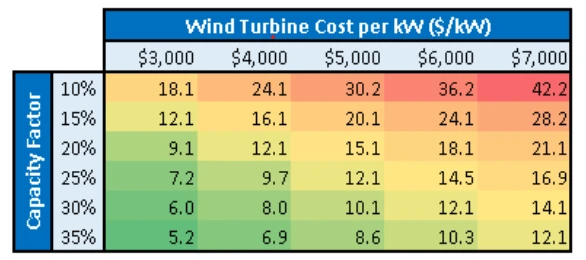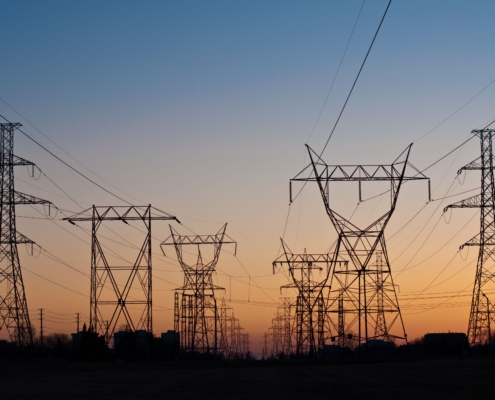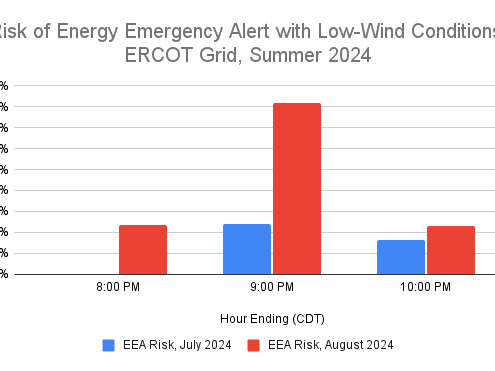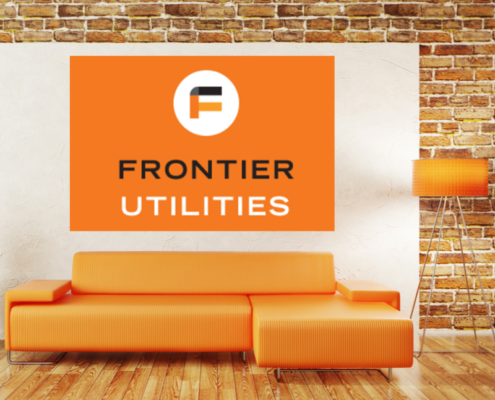Last Updated on May 22, 2022 by Mary Pressler
Using a Wind Turbine at Home
Wind power has become one of the cheapest electricity sources, and some wind farms have lower generation costs than coal power plants. According to the American Wind Energy Association (AWEA), Texas now has over 15,000 wind turbines that represent 30 million kilowatts of generation. This makes wind power the 2nd largest electricity source in Texas, surpassed only by natural gas.
If you have a property with favorable weather conditions, you can produce your own electricity with a small wind turbine. Just keep in mind that the opposite also applies, and wind turbines are not productive in low-wind sites. In these cases, you can consider options like solar power or energy efficiency measures.
Is Your Land Suitable for a Small Wind Turbine?
According to the US Department of Energy, sites with an average wind speed of at least 10 mph are suitable for grid-connected wind turbines. The wind resource handbook from the National Renewable Energy Laboratory (NREL) uses 7 classes to describe wind resources. The DOE recommends at least Class 2, which describes a site with the following conditions:
| Height Above the Ground | Wind Speed Range |
| 10 m (33 ft) | 9.8 – 11.5 mph |
| 30 m (98 ft) | 11.4 – 13.2 mph |
| 50 m (164 ft) | 12.5 – 14.3 mph |
Based on this, you can produce more electricity with a wind turbine by using a taller tower. If you ask the experts, they will normally recommend a tower height of 80 to 120 ft.
Sites with a constant wind that is not disrupted by obstacles are generally the best for small-scale wind turbines. Some examples of good sites for wind power are open plains, beach or lakefront properties and hilltops. Sites that are not recommended include city centers with tall buildings, valleys between hills or mountains, and forests.
How Much Electricity Can a Home Wind Turbine Produce?
The electricity output of a small wind turbine depends on two main factors: the nameplate capacity in kilowatts, and local wind conditions. The electricity output of wind turbines is often described with the capacity factor, which can be defined more easily with an example:
- Assume you have a 10-kilowatt wind turbine. If this turbine operated at full output during an entire year (8,760 hours), it would produce 87,600 kWh of electricity.
- However, this ideal scenario doesn’t happen, since the wind constantly changes.
- If the turbine has a capacity factor of 20%, it means the electricity output is 20% of the ideal maximum value – 17,520 kWh in this case.
The US Department of Energy has found that small wind turbines have a typical capacity factor of 16%. For a 10-kW turbine, this results in an electricity production of 14,016 kWh per year. If a home in Texas has an electric rate of 14 cents/kWh, this amount of wind generation will save $1962 per year.
How Much Does a Small Wind Turbine Cost?
Wind turbines have economies of scale: their total cost increases with size, but the cost per kilowatt of capacity decreases.
The large turbines used in wind farms normally cost less than $2 million per megawatt installed (<$2,000 per kW), and some projects have achieved costs of $1.3 million per MW ($1,300 / kW).
Small wind turbines have much lower costs, but they are more expensive per kilowatt. You can expect to pay $3,000 or more per kilowatt, which means a 50-kW unit will cost over $150,000. However, wind turbines smaller than 100 kW can claim an Investment Tax Credit from the federal government, which has the following schedule:
- 26% for wind turbines installed in 2020
- 22% for wind turbines installed in 2021
This means the 50-kW wind turbine in the example above would actually cost $111,000 in 2020, and $117,000 in 2021.
Payback Period of a Residential Windmill
A 10-kW wind turbine would have an installed cost of $30,000 or more, which drops to $22,200 after deducting the federal tax credit (26%). Assuming the capacity factor of 16% discussed previously, the annual savings are $1962 and the payback period is 11.3 years. However, if the turbine achieves a capacity factor of 25% in a windier site, annual savings are increased to $3,066 and the payback period is reduced to 7.2 years.
As shown by these examples, the payback period of a wind turbine can change a lot depending on wind conditions and the cost per kilowatt. To get the best results, you should get an assessment of the wind conditions in your property, and you should compare several turbine providers to find a good deal.
The following tables show the annual savings and payback period of a 10-kW wind turbine, assuming several costs per kW and capacity factors. An electricity price of 14 cents/kWh is assumed, and the project gets the 26% federal tax credit.

This is a very simplified calculation, and a professional wind assessment is advised before purchasing a wind turbine. However, note how the payback period can vary depending on turbine costs and wind resources.
Residential Wind Turbines: Latest Innovations
Unlike solar panels, which generate electricity with zero moving parts, wind turbines have a rotor with blades spinning at high speed. Wind turbines also cast flickering shadows, and they can be uncomfortable for neighbors if they happen to fall on a window. For these and other reasons, wind turbines are subject to more stringent regulations than solar panels, and there are local governments who don’t allow them in urban areas. However, there are innovative wind turbine designs reaching the market, and some of them are better suited for residential areas.
- Wind turbine walls have rotors and generators mounted in a rigid frame, achieving a discreet design that integrates more easily with residential and commercial buildings.
- Kite wind turbines are designed to operate high above the ground, where wind speeds are higher and steadier with respect to the ground. The kite is anchored to the ground with a cable of adequate strength, which also contains the electrical connections.
- Bladeless wind turbines have no spinning blades, as you might guess from their name. Instead, they use a vertical structure that resonates with the wind, and the oscillation is used to drive an electric generator.
- Vertical axis wind turbines (VAWT) can generate electricity at lower wind speeds, and their blades also move more slowly. These features make VAWTs safer for urban areas, but they are also less efficient than conventional turbines with a horizontal axis. VAWTs also offer the advantage of having their generator mounted on the ground, and not on top of a tower, and this greatly simplifies their maintenance. A VAWT can generate electricity with wind from any direction, unlike conventional turbines that must face the wind.
Combining a Wind Turbine, Solar Panels and Battery Storage at Home
Wind turbines and solar panels can generate electricity at a much lower cost than power plants fired by fossil fuels. Their energy inputs are free, and the only significant expenses after the initial investment are maintenance and part replacements. However, wind and solar power are still limited by their variability: since you can’t control sunlight and wind, you can’t control their output. Instead, you need to take advantage of clean energy electricity when it’s available.
When solar panels and wind turbines are used in the same home, their combined power output tends to become less variable. Individually each system is subject to the variations of its respective energy input, but when both are used together, generation only stops when there is no sunlight and wind. By adding energy storage to the system, you can achieve a reliable power supply that doesn’t depend on fossil fuels. Batteries can be charged with surplus power from either solar panels or wind turbines, and they can provide power when generation falls below consumption.










